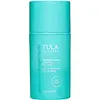What's inside
What's inside
 Key Ingredients
Key Ingredients

 Benefits
Benefits

 Concerns
Concerns

 Ingredients Side-by-side
Ingredients Side-by-side

Water
Skin ConditioningLactic Acid
BufferingGlycerin
HumectantPentylene Glycol
Skin ConditioningPropanediol
SolventSodium Hyaluronate Crosspolymer
HumectantTasmannia Lanceolata Fruit/Leaf Extract
AntioxidantAcacia Senegal Gum
MaskingXanthan Gum
EmulsifyingIsoceteth-20
EmulsifyingTrisodium Ethylenediamine Disuccinate
Sodium Hydroxide
BufferingEthylhexylglycerin
Skin Conditioning1,2-Hexanediol
Skin ConditioningCaprylyl Glycol
EmollientWater
Skin ConditioningGlycerin
HumectantOctyldodecyl Neopentanoate
EmollientPyrus Malus Fruit Extract
Skin ConditioningButylene Glycol
HumectantEthylhexyl Palmitate
EmollientCetearyl Alcohol
EmollientAlaria Esculenta Extract
Skin ProtectingOpuntia Ficus-Indica Stem Extract
Skin ConditioningLactococcus Ferment Lysate
Skin ConditioningLactic Acid
BufferingCoco-Glucoside
CleansingPEG-8
HumectantPropylene Glycol Stearate
Skin ConditioningKluyveromyces/Lactobacillus/Lactococcus/Leuconostoc/Saccharomyces Milk Ferment Filtrate
Skin ConditioningPEG-60 Hydrogenated Castor Oil
EmulsifyingPropylene Glycol Laurate
Skin ConditioningCaprylic/Capric Triglyceride
MaskingEthylhexylglycerin
Skin ConditioningMyristyl Alcohol
EmollientLauryl Alcohol
EmollientCetyl Alcohol
EmollientTocopheryl Acetate
AntioxidantCarbomer
Emulsion StabilisingPalmitic Acid
EmollientStearic Acid
CleansingLecithin
EmollientPolysorbate 20
EmulsifyingBehenyl Alcohol
EmollientAcrylates/C10-30 Alkyl Acrylate Crosspolymer
Emulsion StabilisingOctyldodecanol
EmollientCeramide Ng
Skin ConditioningSorbitan Laurate
EmulsifyingDisodium EDTA
Sodium Hydroxide
BufferingSodium Chloride
MaskingSodium Benzoate
MaskingGlyceryl Stearate
EmollientPhenoxyethanol
PreservativeParfum
MaskingMica
Cosmetic ColorantCI 77891
Cosmetic ColorantWater, Glycerin, Octyldodecyl Neopentanoate, Pyrus Malus Fruit Extract, Butylene Glycol, Ethylhexyl Palmitate, Cetearyl Alcohol, Alaria Esculenta Extract, Opuntia Ficus-Indica Stem Extract, Lactococcus Ferment Lysate, Lactic Acid, Coco-Glucoside, PEG-8, Propylene Glycol Stearate, Kluyveromyces/Lactobacillus/Lactococcus/Leuconostoc/Saccharomyces Milk Ferment Filtrate, PEG-60 Hydrogenated Castor Oil, Propylene Glycol Laurate, Caprylic/Capric Triglyceride, Ethylhexylglycerin, Myristyl Alcohol, Lauryl Alcohol, Cetyl Alcohol, Tocopheryl Acetate, Carbomer, Palmitic Acid, Stearic Acid, Lecithin, Polysorbate 20, Behenyl Alcohol, Acrylates/C10-30 Alkyl Acrylate Crosspolymer, Octyldodecanol, Ceramide Ng, Sorbitan Laurate, Disodium EDTA, Sodium Hydroxide, Sodium Chloride, Sodium Benzoate, Glyceryl Stearate, Phenoxyethanol, Parfum, Mica, CI 77891
 Reviews
Reviews

Ingredients Explained
These ingredients are found in both products.
Ingredients higher up in an ingredient list are typically present in a larger amount.
Ethylhexylglycerin (we can't pronounce this either) is commonly used as a preservative and skin softener. It is derived from glyceryl.
You might see Ethylhexylglycerin often paired with other preservatives such as phenoxyethanol. Ethylhexylglycerin has been found to increase the effectiveness of these other preservatives.
Glycerin is already naturally found in your skin. It helps moisturize and protect your skin.
A study from 2016 found glycerin to be more effective as a humectant than AHAs and hyaluronic acid.
As a humectant, it helps the skin stay hydrated by pulling moisture to your skin. The low molecular weight of glycerin allows it to pull moisture into the deeper layers of your skin.
Hydrated skin improves your skin barrier; Your skin barrier helps protect against irritants and bacteria.
Glycerin has also been found to have antimicrobial and antiviral properties. Due to these properties, glycerin is often used in wound and burn treatments.
In cosmetics, glycerin is usually derived from plants such as soybean or palm. However, it can also be sourced from animals, such as tallow or animal fat.
This ingredient is organic, colorless, odorless, and non-toxic.
Glycerin is the name for this ingredient in American English. British English uses Glycerol/Glycerine.
Learn more about GlycerinLactic Acid is another well-loved alpha hydroxy acid (AHA). It is gentler than glycolic acid but still highly effective.
Its main role is to exfoliate the surface of the skin by loosening the “glue” that holds dead skin cells together. Shedding those old cells leads to smoother, softer, and more even-toned skin.
Because lactic acid molecules are larger than glycolic acid, they don’t penetrate as deeply. This means they’re less likely to sting or irritate, making it a great choice for beginners or those with sensitive skin.
Like glycolic acid, it can:
Lactic acid also acts as a humectant (like hyaluronic acid). It can draw water into the skin to improve hydration and also plays a role in the skin's natural moisturizing factor (NMF) in the form of sodium lactate.
Studies show it can boost ceramide production to strengthen the skin barrier and even help balance the skin’s microbiome.
To get results, choose products with a pH between 3-4.
Lower strengths (5-12%) focus on surface exfoliation; higher strengths (12% and up) can reach deeper in the dermis (deeper, supportive layer) to improve skin texture and firmness over time.
Though it was originally derived from milk, most modern lactic acid used in skincare is vegan. It is made through non-dairy fermentation to create a bio-identical and stable form suitable for all formulations.
When lactic acid shows up near the end of an ingredient list, it usually means the brand added just a tiny amount to adjust the product’s pH.
Legend has it that Cleopatra used to bathe in sour milk to help reduce wrinkles.
Lactic acid is truly a gentle multitasker: it exfoliates, hydrates, strengthens, and brightens. It's a great ingredient for giving your skin a smooth, glowing, and healthy look without the harshness of stronger acids.
Read more about some other popular AHA's here:
Learn more about Lactic AcidSodium Hydroxide is also known as lye or caustic soda. It is used to adjust the pH of products; many ingredients require a specific pH to be effective.
In small amounts, sodium hydroxide is considered safe to use. However, large amounts may cause chemical burns due to its high alkaline.
Your skin has a natural pH and acid mantle. This acid mantle helps prevent harmful bacteria from breaking through. The acid mantle also helps keep your skin hydrated.
"Alkaline" refers to a high pH level. A low pH level would be considered acidic.
Learn more about Sodium HydroxideWater. It's the most common cosmetic ingredient of all. You'll usually see it at the top of ingredient lists, meaning that it makes up the largest part of the product.
So why is it so popular? Water most often acts as a solvent - this means that it helps dissolve other ingredients into the formulation.
You'll also recognize water as that liquid we all need to stay alive. If you see this, drink a glass of water. Stay hydrated!
Learn more about Water